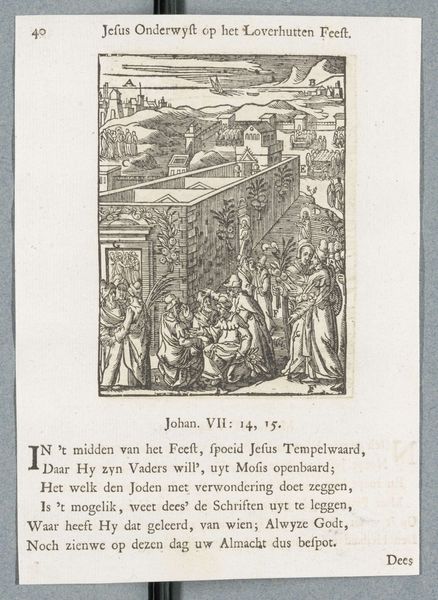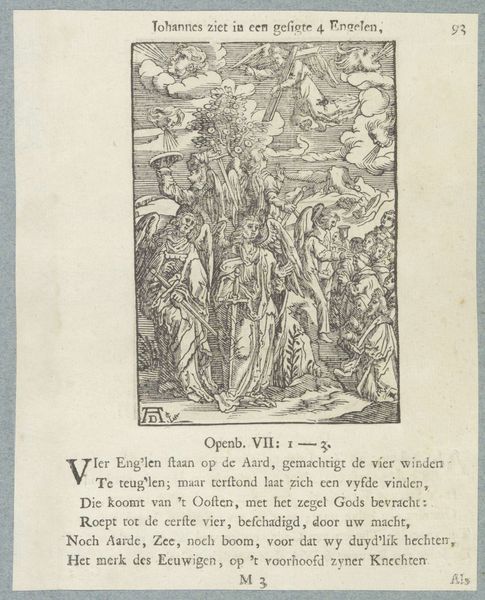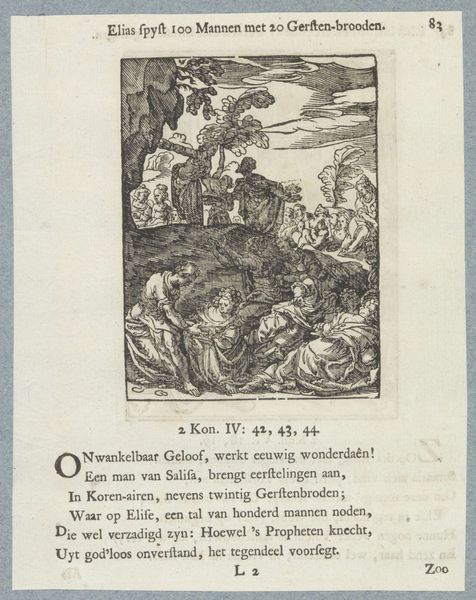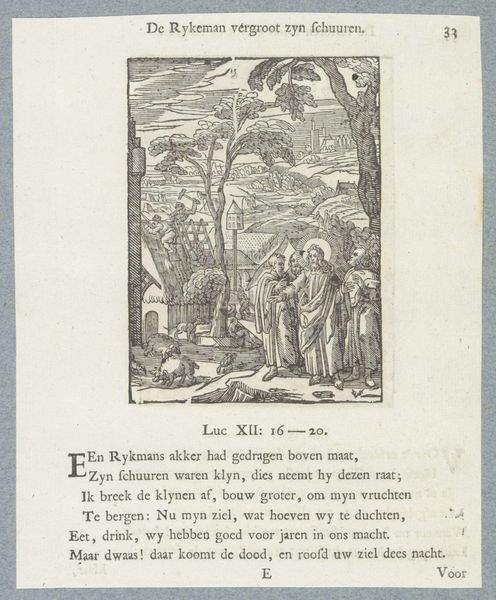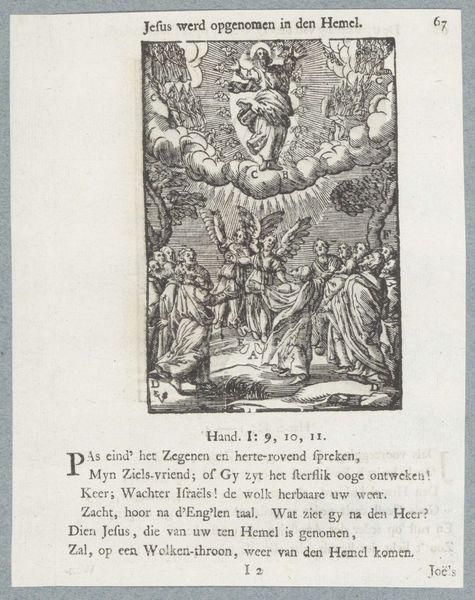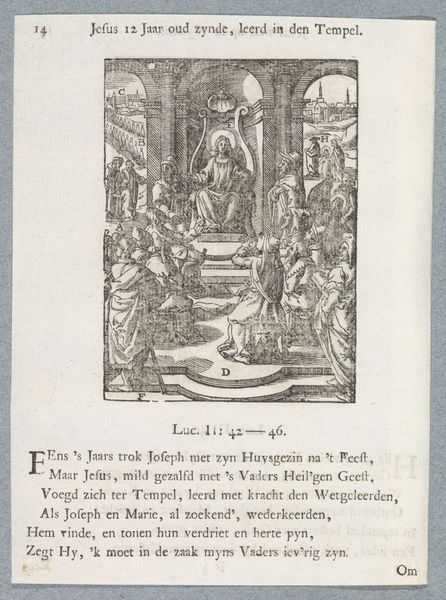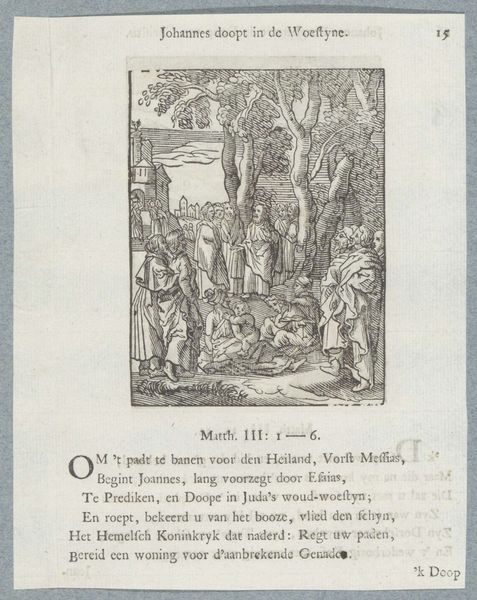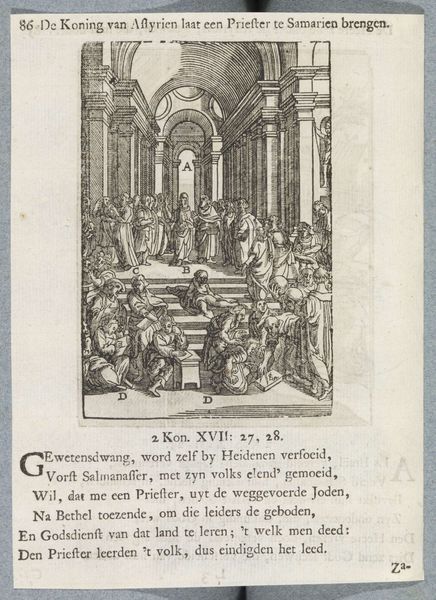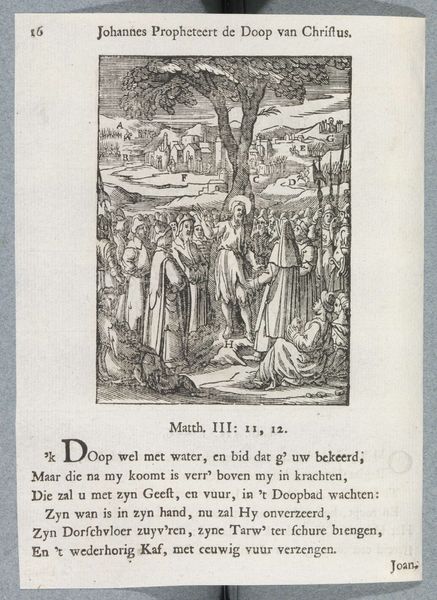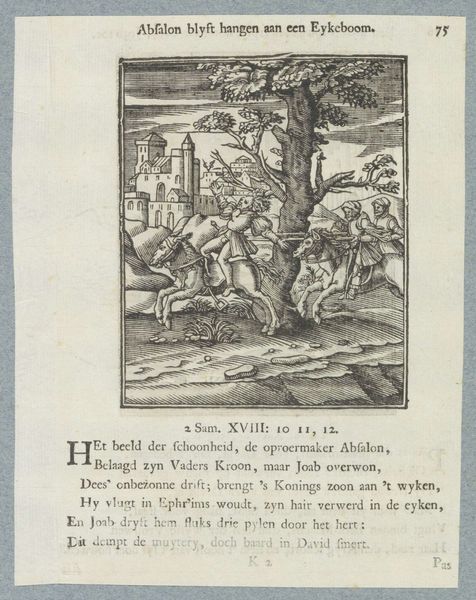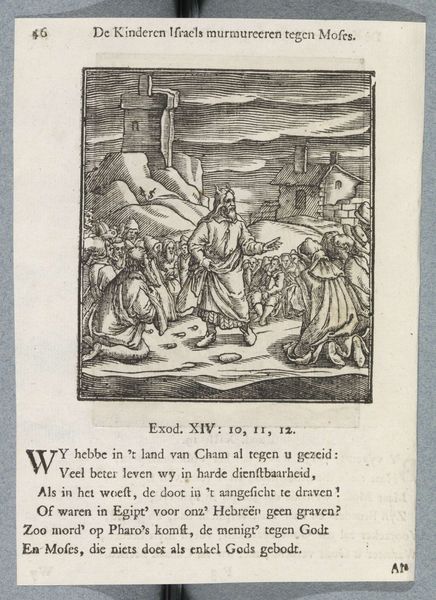
print, paper, engraving
#
narrative-art
#
baroque
# print
#
figuration
#
paper
#
line
#
history-painting
#
engraving
Dimensions: height 99 mm, width 72 mm, height 169 mm, width 132 mm
Copyright: Rijks Museum: Open Domain
Curator: We're looking at an engraving today from the Rijksmuseum, titled "Tweede wonderbaarlijke spijziging," or "Second miraculous feeding," dating sometime between 1629 and 1740, attributed to Christoffel van Sichem II. Editor: My first thought? It's a fascinating, bustling scene, incredibly detailed given its size and medium, a symphony of black lines illustrating… well, what feels like a miracle in progress. There's an element of chaos contained within this frame. Curator: The engraving depicts the biblical story of the Feeding of the Five Thousand. Van Sichem was known for illustrating biblical scenes, often with a distinct graphic style reflective of the period. Prints like this would have been widely distributed, making religious narratives accessible to a broad audience. The political context in which this print emerges, during times of social stratification and struggle for religious representation, is essential in contextualizing its purpose. Editor: Exactly. Considering its distribution, one sees that this wasn't just art for art's sake, it was imagery shaping belief, solidifying power dynamics. It would reach the illiterate too, so they could visualize this act of generosity and consider their own material conditions. That visual translation to paper can have immense effects in reinforcing a particular structure of power. Curator: Note the artist’s decision to represent all these figures with very fine lines; consider how it all emphasizes the communal and miracle aspects of this account in Christian texts. Van Sichem used the very economical and available material in order to reproduce his interpretation of a relevant religious excerpt. Editor: Agreed. Thinking about today, what kind of images go "viral," how those images reinforce narratives, or how marginalized voices get represented – or silenced – is what comes to my mind looking at the historical impact this artwork could have made at the time. The artist, as well as the museum context, act as selectors which choose some historical facts instead of others; what isn't here is perhaps more meaningful than what is. Curator: Indeed. This print serves as a reminder of how art functioned as a vital communication tool, and a very impactful socio-political artifact that contributes to how religious ideas are represented to the public. Editor: A tiny engraving holding a mirror up to both faith and society. What a poignant reminder.
Comments
No comments
Be the first to comment and join the conversation on the ultimate creative platform.
